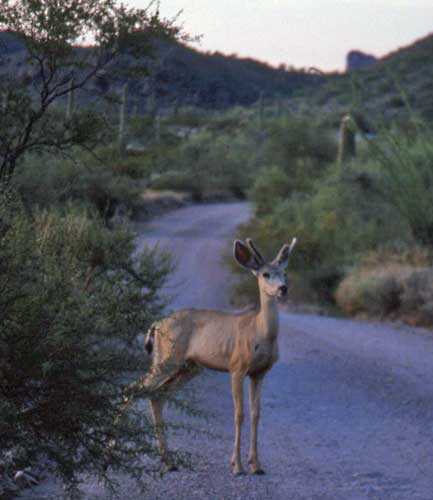- Traffic Division. This department creates impact statements for private developments, and conducts traffic studies. The light on Cortaro and Arizona Pavilion is one such intersection where the traffic signals are constantly getting updated depending on traffic and commercial development.
- Environmental Division. This department reviews private developments to see if any harm is placed on the environment. It also mitigates any hazards. Federal laws demand certain environmental compliance, so any action that involves specific ordinances concerning federal environmental regulations must follow federal procedure.
- Development Engineering. This department reviews private developments, particularly in drainage and site construction. It is important for construction to meet building codes. Marana prides itself on having high standards of development, and have won Common Ground Awards for residential design standards.
- Building Department. Keith resides over the review side of this department. This department reviews models of single family homes.
When a developer is interested in building in Marana, they must submit a sketch of the proposed layout, which is distributed through Engineering, Planning, Fire, Marana water, and CIP depending on the condition of the development. These departments review to foresee any issues, and discuss concerns. After this, the developer gives a submittal. If the developer is particularly large (with several thousand homes), then they have a meeting with upper management to discuss any important community impacts that may occur from the development.
Procedural Challenges
In the town engineering line of work, it is common to deal with code infractions by developers or individuals. Flood plaining is another challenge that has recently been resolved. In 2007, FEMA redrew the flood plain maps to include many areas of Marana that are not necessarily in the flood plains. After working to update the maps, Marana is now ready to present the new flood plain maps this summer that show an updated and accurate representation.
Environmental Concerns
 In Marana, there are 10 species that are of primary concern, so the environment plays a prevalent role in the town's engineering and development. Marana has adopted a Habitat Conservation Plan, of which determines set guidelines for when rezoning occurs for development. Many of the regulations include insuring a limit of 30% disturbance, maintaining a protective corridor, and overall protecting important environmental features of the area. A large portion of Marana's undeveloped land is zoned for agriculture, so any developer that comes along must abide by these regulations if they want to rezone for housing.
In Marana, there are 10 species that are of primary concern, so the environment plays a prevalent role in the town's engineering and development. Marana has adopted a Habitat Conservation Plan, of which determines set guidelines for when rezoning occurs for development. Many of the regulations include insuring a limit of 30% disturbance, maintaining a protective corridor, and overall protecting important environmental features of the area. A large portion of Marana's undeveloped land is zoned for agriculture, so any developer that comes along must abide by these regulations if they want to rezone for housing. It is very important to maintain a link between the Tortolita Mountains and the Tucson Mountains in order to preserve the wild animal population. When the Twin Peaks Rd was built, a mule deer crossing was placed beneath it to allow for the mule deers to access land on both sides.
Public Interaction
It is very common for Keith to interact with the public, because many times the public wants to hear from the department head why certain projects are happening. Sometimes a neighborhood will not be happy with a new zoning, such as for a landfill. Other times, historical events can have a lasting effect on town-citizen relationships.
San Lucas' Back Door
As part of my future project with Homeland Security, I got to check out the 'back door' of the San Lucas development. Currently, the only established way in and out of the development is over a train crossing. If ever there were a derailment, the community members will need to use an alternative way out. These are the two current alternative ways:
- Owl Head Route
- Patton Route
Reflection
I enjoyed today's rotation and having a chance to see what the relationship is between the town and commercial developers. I'm excited to get started on my homeland security project next week, now that I've had a chance to see the conditions of the alternative routes around San Lucas.


No comments:
Post a Comment